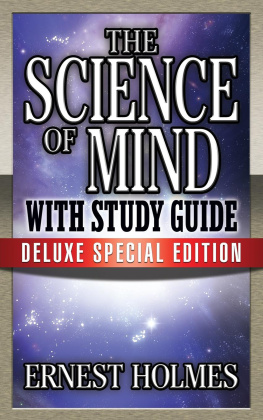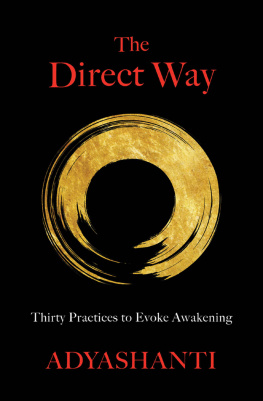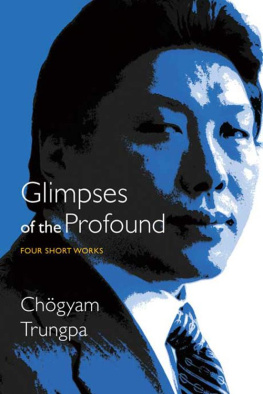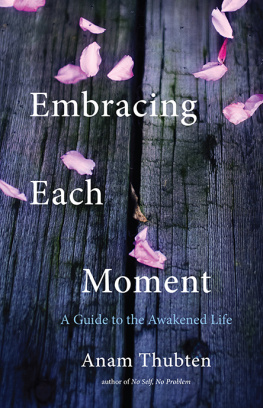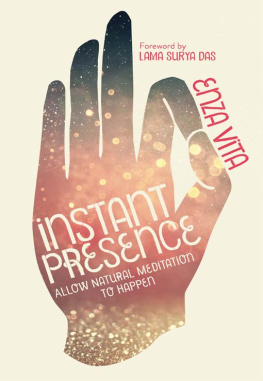
Copyright
Blessings and gratitude to all those who transcribed tapes, to Dan Hawthorne for formatting the original books and getting them ready for press, to Eli Jaxon-Bear for his inspiration and consultation, to Al Drucker for his invaluable editing suggestions, and especially to enthusiastically and tirelessly entering the numerous changes while contributing to the overall book production.
Everlasting appreciation for Barbara Denempont. Her clarity of leadership and supportive love have contributed to this new edition in uncountable ways.

Image I

Image II: Sri Ramana Maharshi
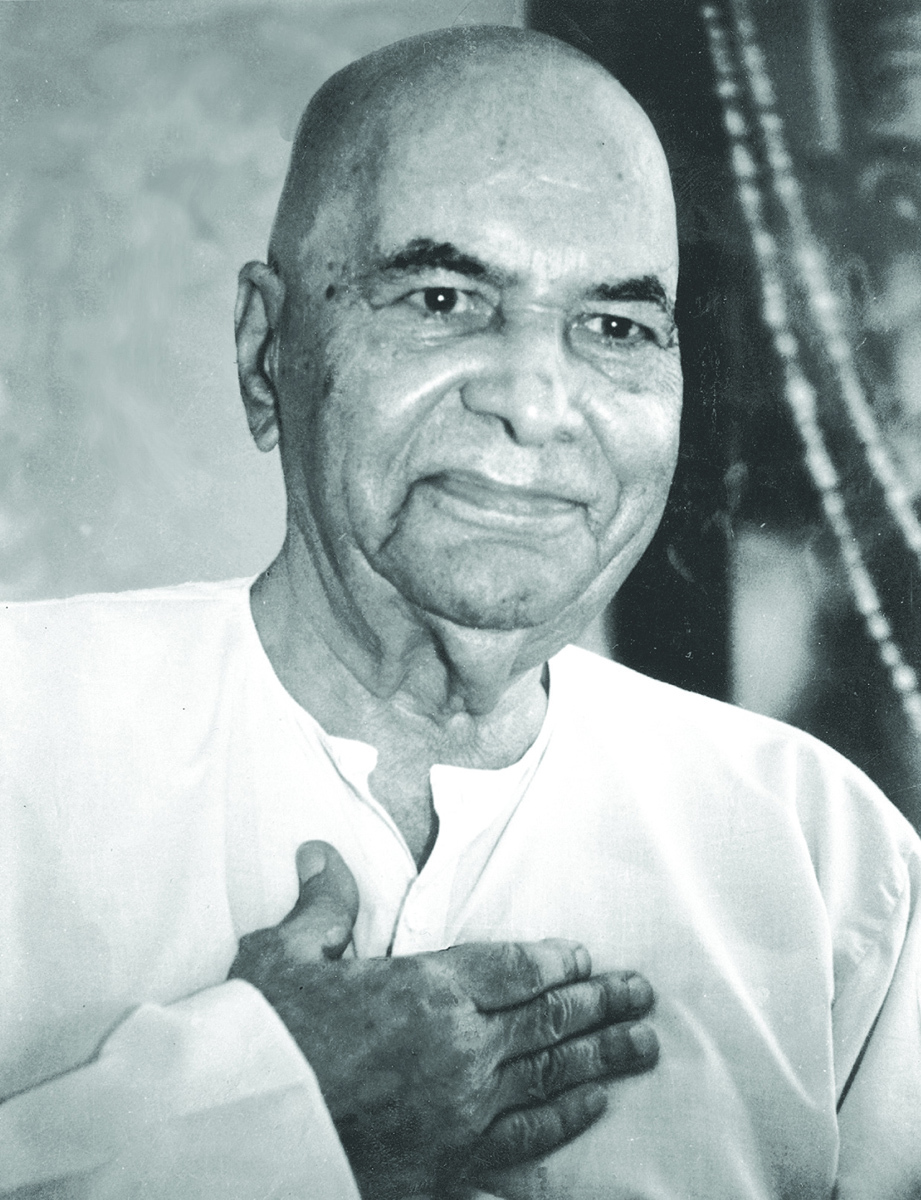
Image III: COURTESY OF AVADHUTA FOUNDATION
H.W.L. Poonja
For Beloved Papaji
Radiant manifestation of Self
whose recognition and confirmation
removed all pretense of doubt.
It is only through his grace that satsang
with Gangaji makes its appearance here
in consciousness.
FOREWORD
No one has ever reported an end to realizing true self. These words of Gangaji will reverberate as you dive, or rather, float, into You Are That. With the turning of each page, the relaxation into true self becomes deeper and quieter; the movements of resistance, fewer. Reading this book will not be an exercise in acquiring knowledge. Rather, the experience will be the release of your imagined spiritual certainties. This release will sneak up on you. Just as your mind is busy trying to work some particular phrase, trying to hold it in a conceptual way, to get it, the next words on the page will plunge you into quiet again. It is the opposite of reading a book for intellectual, emotional, or spiritual gain. It is instead the experience of reading a book in order to refresh yourself in what our teacher, Poonjaji, called, the reservoir of nothingness.
And this is not, of course, the nothingness of a dark void. People will do anything to avoid their fear of such a void and, as Gangaji points out, frantic mental activity is generated to fill [this] seeming void. The reservoir of nothingness refers instead to the incomparable respite from having to present something or someone to the world, from having to maintain any kind of image. It refers to the deep and consistent realm of simply being. When Gangaji, and before her, Nisargadatta (of the treasured collection of talks called I Am That), as well as countless other great teachers throughout time, refers to that, it is this ineffable, pure sense of being, the direct experience of existence pulsing in oneself and all things.
Yet Gangaji is a most contemporary teacher, well steeped, after many years of interacting with thousands of students, in the issues that arise for anyone turning to the simplicity of being from a complicated life of doing and having. Though her focus steadfastly remains on this simplicity of being, she also understands and addresses the disillusionment that comes from a life of grasping the things and experiences of the world, and the even more profound disillusionment that comes from trying to grasp spiritual experience. While acknowledging the journey of the modern seeker, who has likely traversed psychological as well as spiritual paths, she unfailingly points you back to stillness and to letting go of all spiritual strategies, even your most precious hopes of enlightenment: That which you are is untouched by any idea of ignorance or enlightenment. Thus, she exhorts you to abandon your ideas for aggrandizing your spiritual persona, or else your turning to satsang would be simply an exchange of trances.
Instead, Gangaji invites you to experience true joy, a sense of wellbeing that is not dependent on comfort or possessions but on your stillness in the comings and goings of all phenomena, the stillness within your difficulties as well as your triumphs. And while many traditions have spoken of this stillness and have offered techniques and meditation practices to come to it, Gangaji says, as did Poonjaji, that these techniques and practices, though they have their uses for calming the mind, can also become mental traps if they engender the dualistic separation of meditation and the rest of my life. Gangaji suggests that you experience your whole life as a living meditation, a silent awareness in daily existence that requires nothing other than the recognition of its constancy to live in that experience. You will not need to add anything at all. You will not need to practice anything to enjoy that constancy. And in that silent awareness that is not trying to get somewhere else, not trying to get enlightened, not trying to get better, there is unmitigated peace, the true joy to which Gangaji refers.
It is so simple that it is easily overlooked. But the readiness to come to this simplicity, as Gangaji explains in this book, requires spiritual maturity. It is somewhat ironic that only with the deconstruction of ones various activities of acquisitionachievements, fulfillment of desires, acquiring of beliefs, practices, and spiritual experiencesthat true maturity comes and is found in the surrendering of all acquisitions and experiences, leaving one with nowhere to stand. It is the maturity of confronting the question of who you would be if you were not the owner, the spouse, the adventurer, the parent, the lover, the spiritual seeker. It is the maturity of not needing to prove anything, proclaim cosmic insights, or be on your way to some greater goal. It is the maturity of being comfortable in your own skin, as is, and in the twinkling delight of knowing your own dear selfthe stripped-down, bare-bones versionin what Gangaji beautifully describes as the trembling shyness in the face of divinity.
Throughout this book, you will be in touch with thisyour own dear self, shy in the face of divinity. You will experience what Gangaji speaks of as a living sutra, words that spring from silence and take you there. You will experience the quiet joy that comes not from unraveling a spiritual mystery but from living as one. I recommend that you keep this book by your bedside and dip into its exquisite reservoir of nothingness whenever you can. No matter what page you land on, you will be reminded that you are that.
Catherine Ingram
Los Angeles, 2006
ABOUT THE BOOK
Meetings with Gangaji are public gatherings, open to everyone, in which Gangaji interacts with those asking questions or making comments.
You Are That contains selected excerpts from meetings held from 1993-1995 in various locations of northern India, Nepal, Bali, and the western United States, including Maui, Hawaii.
This newly revised edition comprises both original You Are That volumes, with additional material and chapters added from meetings held in Perth, Australia, in November of 2005.
WELCOME TO SATSANG
That which you yearn for, that which you hunger for, is that which is always present. That is who you truly are.



